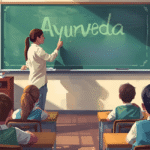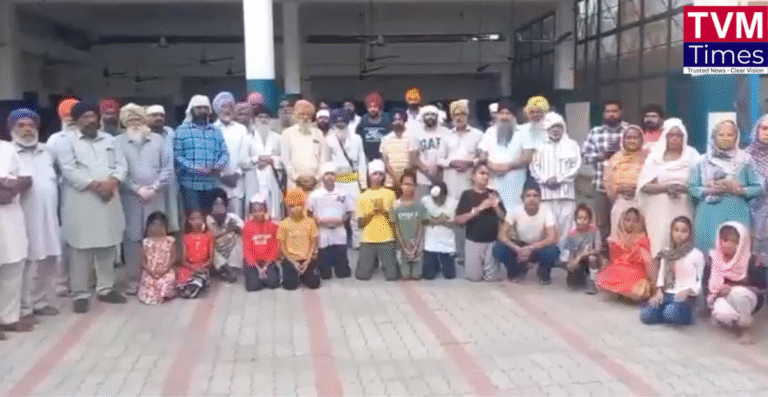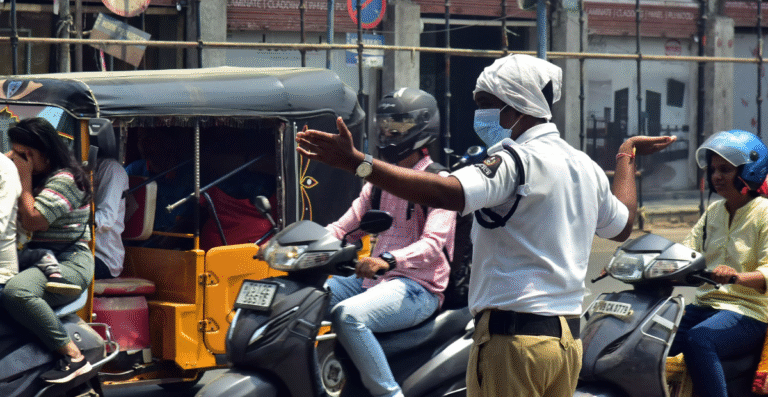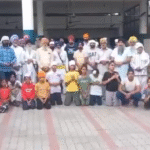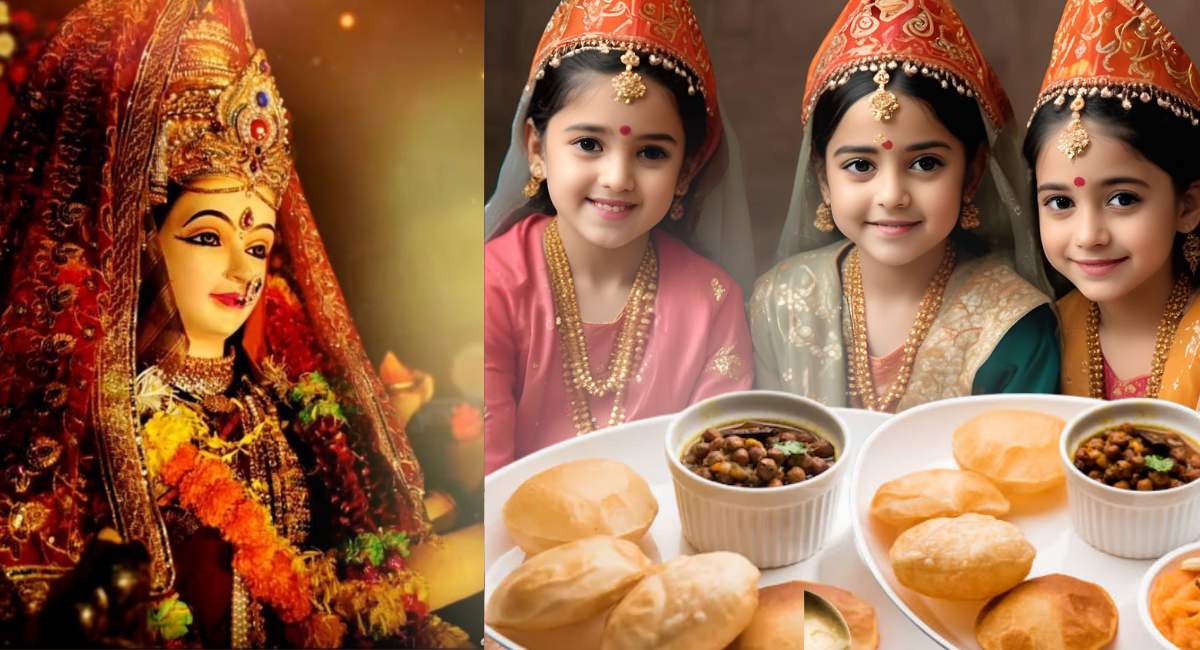
In Navratri 2025, Ashtami will be observed on September 30, followed by Navami on October 1. These two days hold great spiritual value as they mark the worship of Goddess Mahagauri (Ashtami) and Siddhidatri (Navami). A very special part of these days is the preparation of the famous Navratri Bhog—the traditional trio of halwa, poori, and kala chana. This food is offered to the goddess and to young girls during the ritual of Kanya Puja (Kanjak).
Why Halwa, Poori & Kala Chana in Navratri Bhog?
During Ashtami and Navami, families invite little girls, worship them as the form of the goddess, and serve them this sacred meal. But why this particular combination?
- Kala Chana represents strength, nourishment, and stability.
- Poori symbolizes fullness and satisfaction.
- Sooji Halwa adds sweetness and energy, signifying joy and prosperity.
This trio balances taste, energy, and nutrition, making it both a symbolic and practical offering.
Mythology Behind Navratri Bhog
According to Hindu scriptures, young girls are seen as the living form of Goddess Durga. Worshipping them on Ashtami and Navami is believed to please the goddess and bring blessings of prosperity and protection.
The Navratri bhog of halwa, poori, and kala chana is a way of honoring the divine feminine. Serving this prasad and touching the feet of little girls reflects humility, gratitude, and devotion.
Health Benefits of the Navratri Bhog
Apart from spiritual meaning, this Navratri bhog also carries health wisdom:
- Kala Chana is packed with protein, fibre, iron, and vitamins. It supports digestion, energy, and blood health.
- Halwa made with sooji and ghee provides quick energy and healthy fats, especially useful after fasting.
- Poori adds carbohydrates, completing the meal as a balanced offering of protein, fat, and carbs.
Together, this prasad helps the body recover from fasting while nourishing it with essential nutrients.
Rituals of Kanya Puja in Navratri 2025
On Ashtami and Navami in Navratri 2025, devotees perform Kanya Puja in the following way:
- Welcoming the girls – Washing their feet and seating them respectfully.
- Tilak and thread – Applying tilak on their forehead and tying a sacred thread.
- Serving Navratri bhog – Offering halwa, poori, and kala chana with love.
- Gifts and blessings – Giving small gifts or money and taking blessings by touching their feet.
- Breaking the fast – Devotees end their fast by eating the same bhog after the ritual.
Simple Recipe for Navratri Bhog
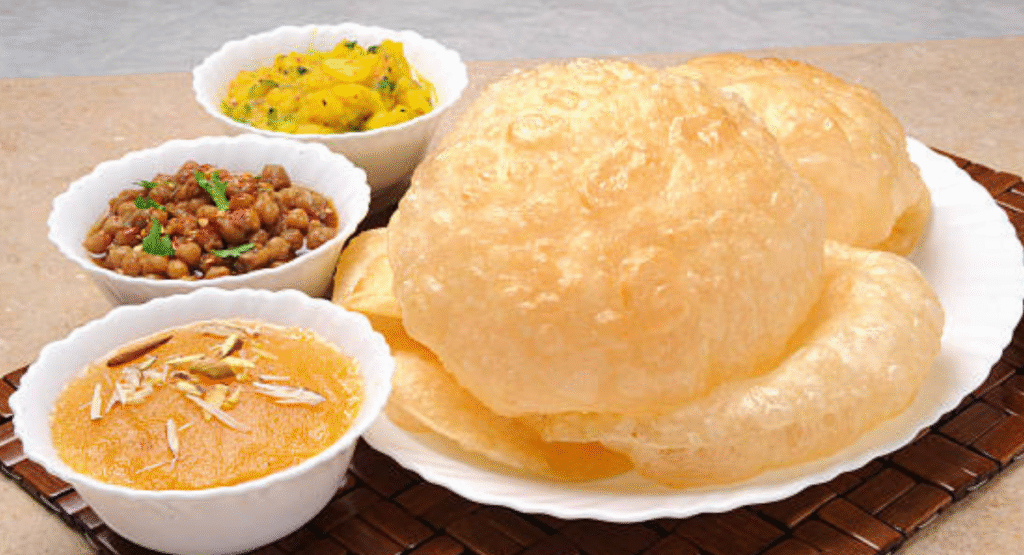
- Halwa – Roast sooji in ghee, add sugar syrup, and garnish with nuts.
- Poori – Knead wheat flour into soft dough, roll into discs, and deep fry.
- Kala Chana – Soak overnight, boil, and cook with mild spices for taste.
This simple preparation makes the Ashtami meal wholesome, sacred, and full of flavor.
Conclusion
The tradition of offering halwa, poori, and kala chana as Navratri bhog shows how food in Indian culture goes beyond taste—it carries spiritual, cultural, and nutritional meaning.
As you celebrate Navratri 2025, prepare this sacred trio with devotion, offer it with respect, and share it with loved ones. It is more than just food—it is a prayer, a blessing, and a celebration of the goddess’s divine energy.



